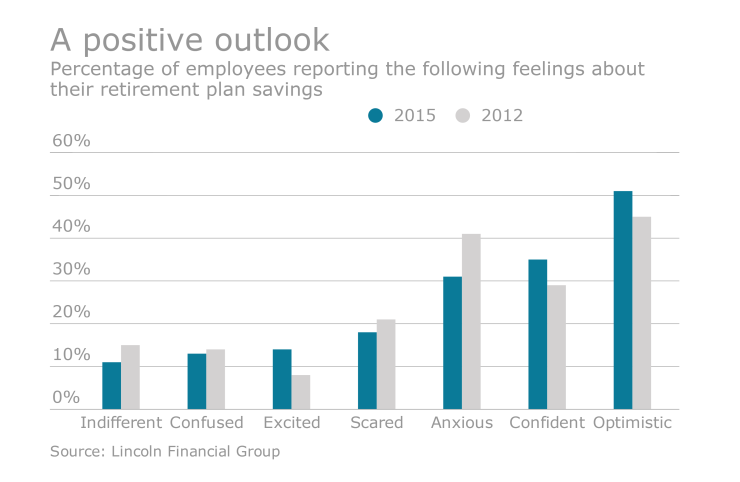In analyzing the financial behaviors of 67,089 U.S. employee financial wellness assessments, Financial Finesse concluded that the most impactful action was for employers to offer a retirement calculator. The 2016 Year in Review Report also suggested that they promote it to the hilt with the help of their brokers and advisers.
“Running that projection is driving other behavior,” such as changes in cash flow or higher retirement plan contributions over time, explains Cynthia Meyer, a financial planner with Financial Finesse and author of the report.
She says advisers can help spotlight the use of a retirement calculator in an educational workshop or enrollment meeting where they can detail examples or case studies involving the potential effect of this handy tool.

The report uncovered a few bright spots. More employees ran a retirement projection, which jumped to 49% in 2016 from 35% in 2015. In addition, about 60% of these employees discovered they were on track to retire comfortably while about 40% discovered they were underfunded and needed to make changes.
Another positive development was that repeat usage of workplace financial wellness programs appears to be gaining momentum. The number of employees who have done annual workplace assessments of their finances multiple times has climbed steadily since 2013 when it was just 6% to 15% in 2014, 16% in 2015 and 29% in 2016.
However, problems persist. Virtually all demographic groups were still found to have insufficient savings for a comfortable retirement. For example, while 92% of the employees studied participate in an employer-sponsored retirement plan, just 77% contribute enough to earn the full employer match.
Still, Meyer notes that packaging financial wellness content with a good retirement plan is becoming a standard practice as the movement toward a more holistic view of employee finances gains traction.
Aon Hewitt’s 2017 Hot Topics in Retirement and Financial Wellbeing survey found that 59% of employers are very likely and another 33% are moderately likely to focus on the financial wellbeing of workers in ways that extend beyond retirement decisions. Moreover, 86% of employers are very or moderately likely to communicate to their workforces the link between health and wealth.
Rob Austin, director of retirement research at Aon Hewitt, says this is an indication of “just how much I think employers still care about their employees.” It certainly bodes well for brokers and advisers who can expect to be busy in the coming years helping their clients create a strategy and build out a plan that appeals to each workforce, he believes.
Aon Hewitt’s survey, whose 238 respondents represent nearly 9 million employees, noted several other key trends. They include employers enhancing both the accumulation and decumulation phases for their defined contribution plan participants, and defined benefit plan sponsors revisiting ways they’re removing risk from their plan.





